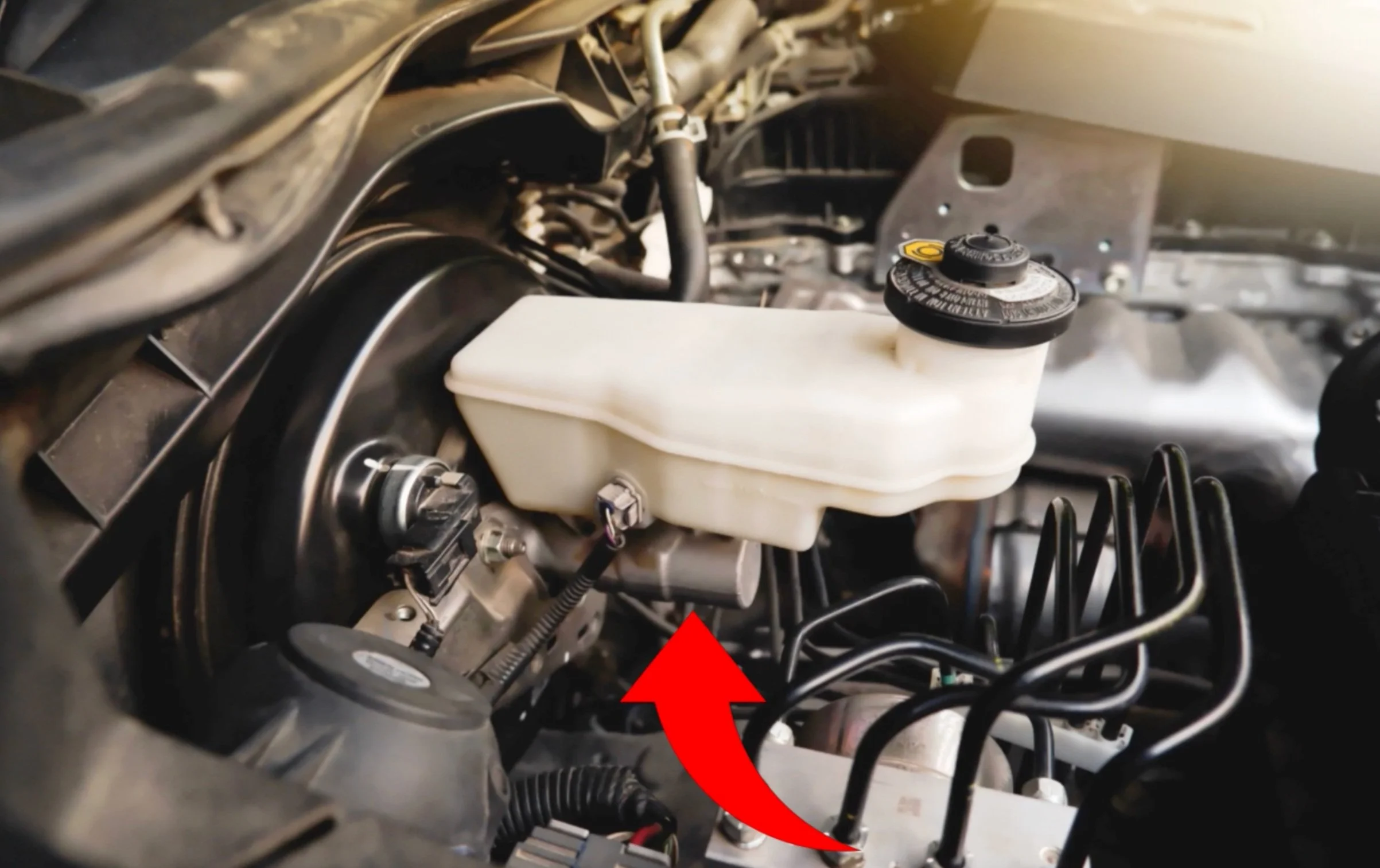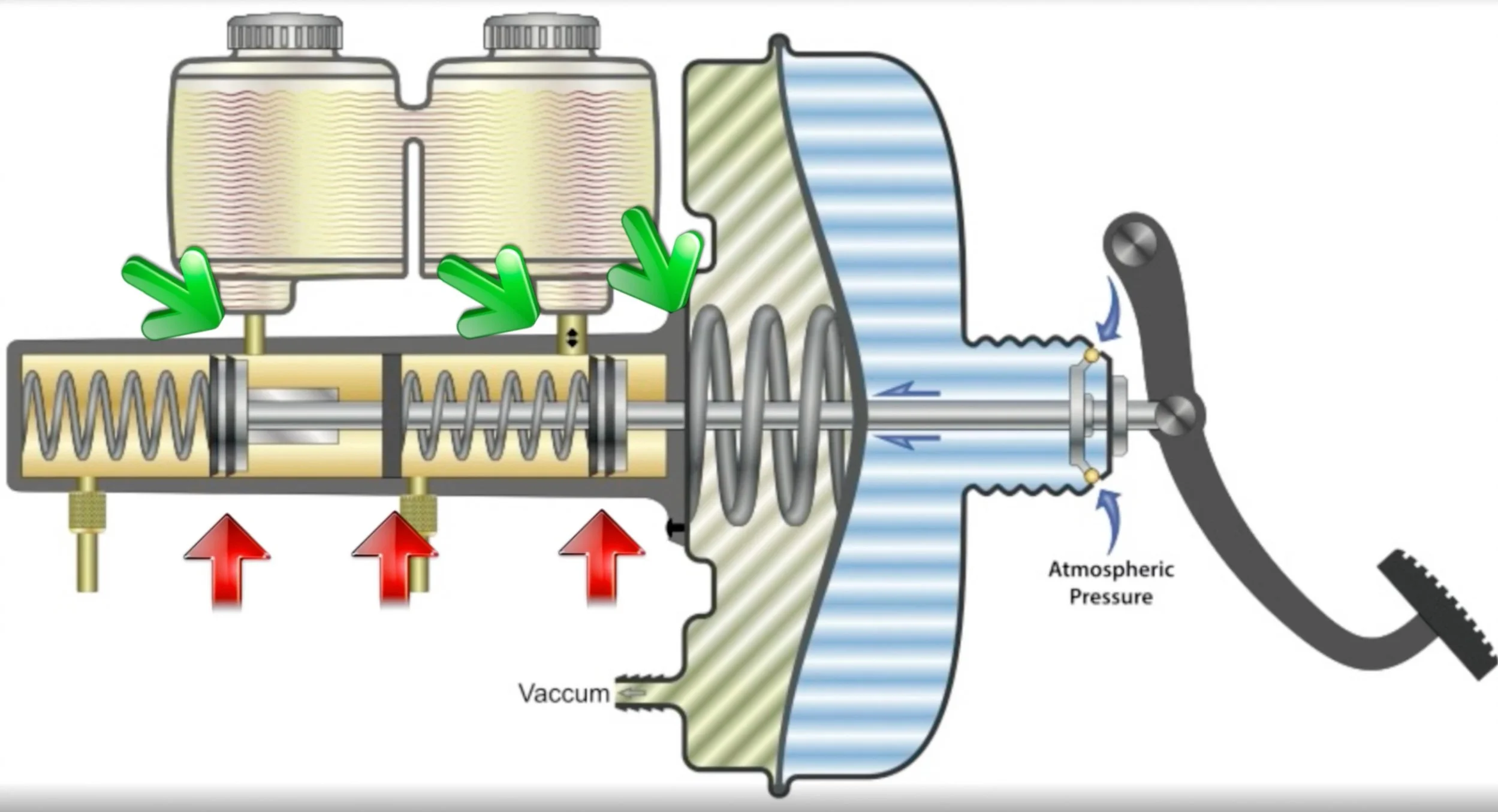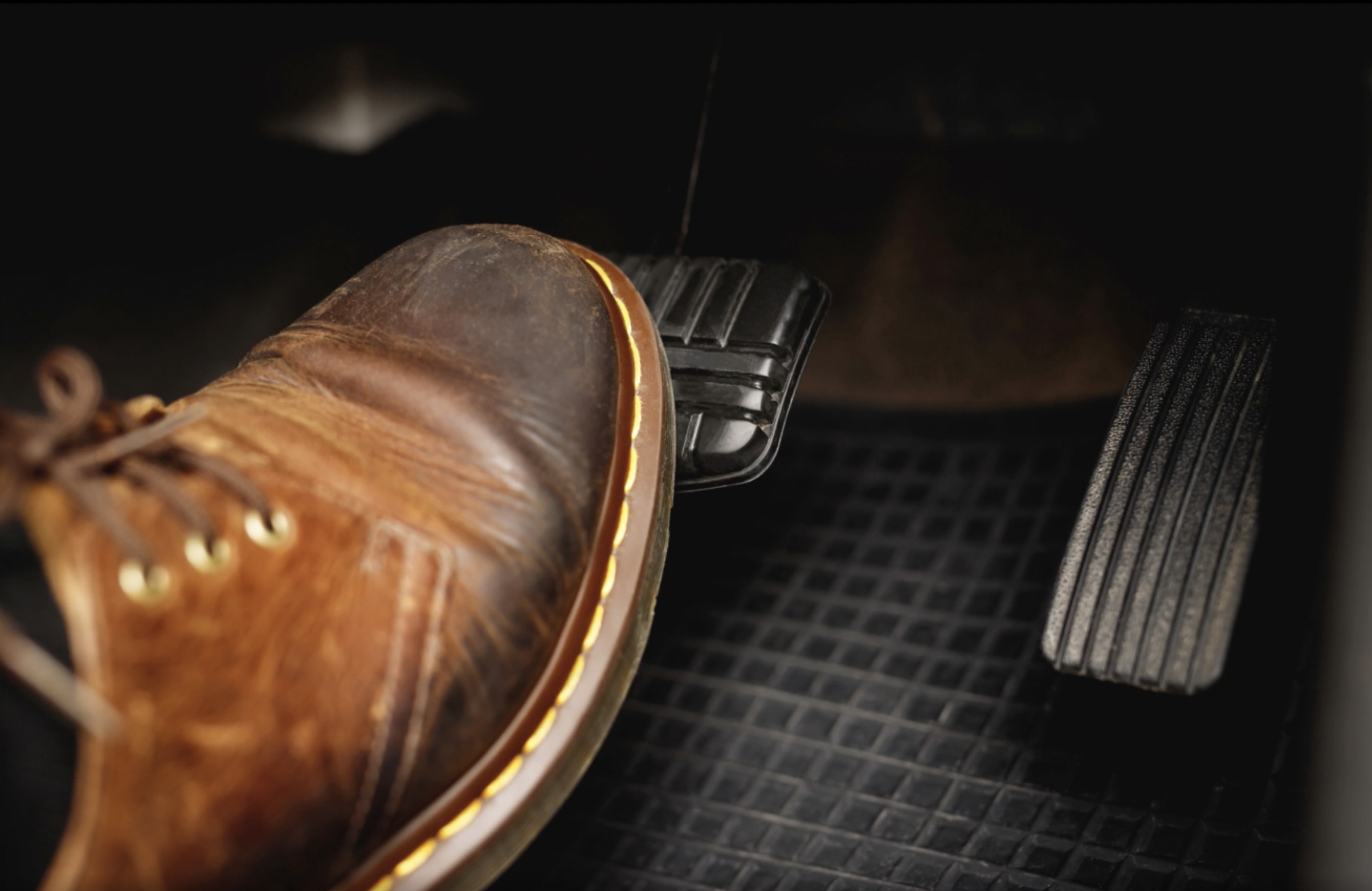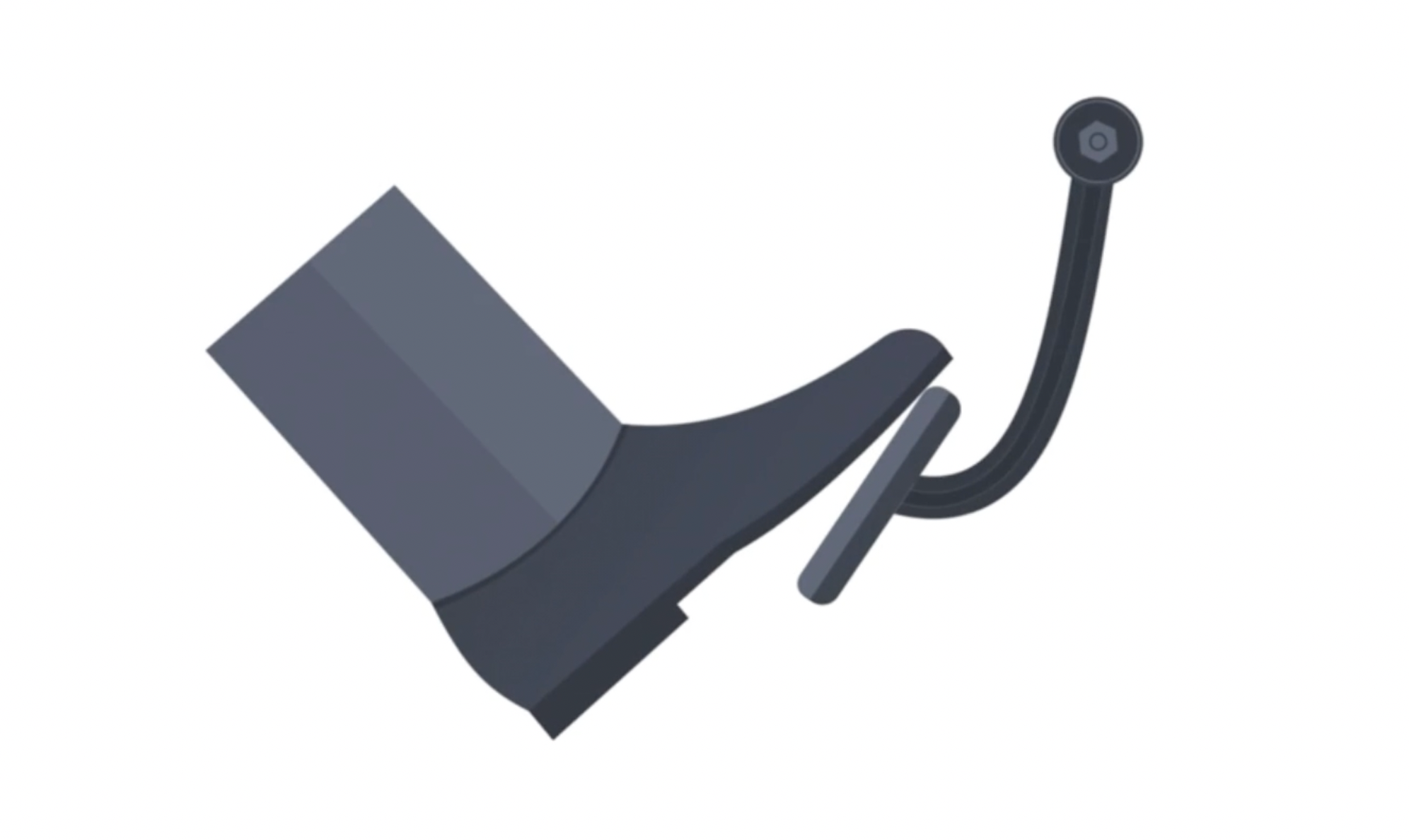SYMPTOMS OF BAD BRAKE MASTER CYLINDER
PURPOSE
The purpose of the master cylinder is to distribute brake fluid to each wheel when pressing down on the brake pedal. This allows the calipers or wheel cylinders to compress the brake material to stop the wheels.
LOCATION
The brake master cylinder will be located in the engine compartment on the driver’s side underneath the reservoir. It will also be connected to the brake booster.
symptoms
Brake fluid leak
The first symptom of a bad brake master cylinder is a brake fluid leak. There can be two types of leaks: external and internal. External brake fluid leaks (shown with green arrows on the picture) could be coming from the grommets between the reservoir and the body. It can also leak from the seal inside the master cylinder that's closest to the brake booster. On the other hand, internal leaks (shown with red arrows on the picture) could occur if the seals inside the brake master cylinder are torn preventing it from holding pressure when the brakes are applied.
FLUID CONTAMINATION
The second symptom of a faulty brake master cylinder is fluid contamination. If you notice the brake fluid is darker than usual it could be caused by moisture or debris entering through the torn seals causing it to get to that point.
spongy brake pedal
The third symptom of a damaged brake master cylinder is a spongy brake pedal. Having a leak coming from the grommets can let fluid escape and bring air inside the system. Air inside the brake system is what can cause a spongy brake pedal.
PEDAL SINKING TO THE FLOOR
The fourth symptom of a bad brake master cylinder is the brake pedal sinking to the floor. This could be caused by torn seals inside the master cylinder preventing the system from holding fluid pressure. When the fluid passes through the defective seals you'll feel the pedal sinking.
longer braking distance
The fifth symptom of a damaged brake master cylinder is a longer braking distance. You'll press down on the brake pedal only to realize that your car is not stopping as fast as it used to. The reason for this could be due to the leaks inside the master cylinder. Since the seals aren’t able to hold the fluid pressure inside the braking system, the master cylinder won't be able to deliver the correct amount of hydraulic force needed to compress the brakes on the rotors or drums to stop the car.
Check out my favorite brake tools linked below!
Check out my YouTube video!
Disclaimer: Some links on this website may be affiliate links.








